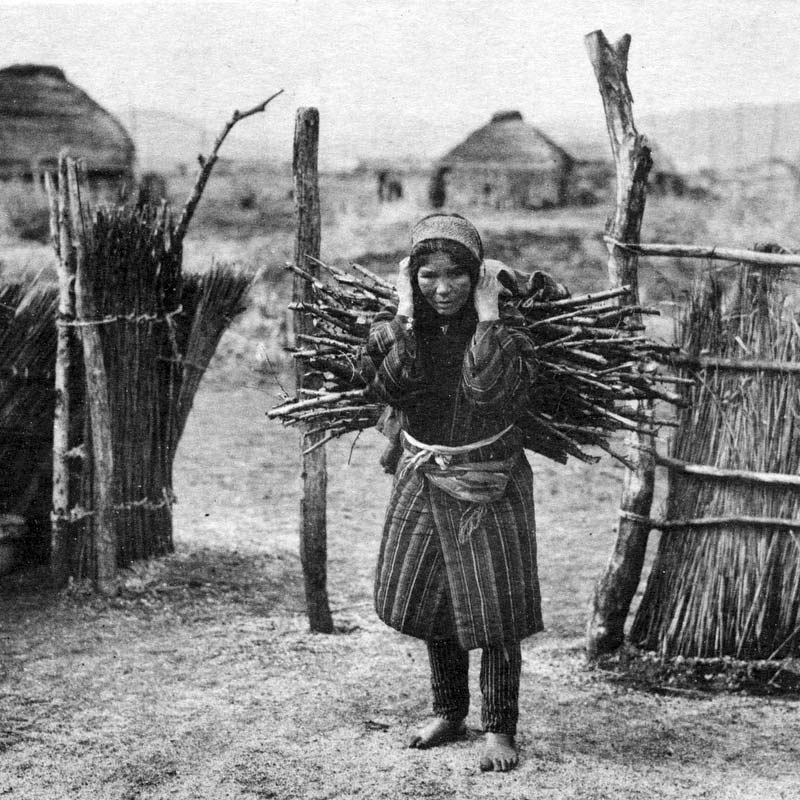This glass slide offers a rare snap shot of Ainu family life showing what appears to be a father and his children.
Most of the photos of Ainu of this period were posed. However in this image, only the little boy’s attention is directed at the photographer. The conversation between the man and the little girl in her colorful clothes, and the soft expression on the man’s face, makes this image especially charming.
British travel writer Isabella Lucy Bird (1831–1904) stayed with Ainu in 1878 and wrote about the strong family bonds among Ainu, as well as Ainu children1:
They are much loved, and are caressing as well as caressed. The infants of the mountain Ainos have seeds of millet put into their mouths as soon as they are born, and those of the coast Ainos a morsel of salt-fish; and whatever be the hour of birth, ‘custom’ requires that they shall not be fed until a night has passed. They are not weaned until they are at least three years old. Boys are preferred to girls, but both are highly valued, and a childless wife may be divorced. Implicit and prompt obedience is required from infancy; and from a very early age the children are utilised by being made to fetch and carry and go on messages. I have seen children apparently not more than two years old sent for wood; and even at this age they are so thoroughly trained in the observances of etiquette that babies just able to walk never toddle into or out of this house without formal salutations to each person within it, the mother alone excepted. They don’t wear any clothing till they are seven or eight years old, and are then dressed like their elders. Their manners to their parents are very affectionate. Even today, in the chief’s awe-inspiring presence, one dear little nude creature, who had been sitting quietly for two hours staring into the fire with her big brown eyes, rushed to meet her mother when she entered, and threw her arms round her, to which the woman responded by a look of true maternal tenderness and a kiss. These little creatures, in the absolute unconsciousness of innocence, with their beautiful faces, olive-tinted bodies,—all the darker, sad to say, from dirt,—their perfect docility, and absence of prying curiosity, are very bewitching. They all wear silver or pewter ornaments tied round their necks by a wisp of blue cotton.
Although, Bird repeatedly described the Japanese love of their children and their close relationship with them, this was the only time during her long stay in Japan that she wrote about a mother kissing her child.
Notes
1 Bird, Isabella L. (1911). Unbeaten Tracks in Japan: An account of travels in the interior including visits to the aborigines of Yezo and the shrine of Nikko. John Murray.
Published
Updated
Reader Supported
Old Photos of Japan aims to be your personal museum for Japan's visual heritage and to bring the experiences of everyday life in old Japan to you.
To enhance our understanding of Japanese culture and society I track down, acquire, archive, and research images of everyday life, and give them context.
I share what I have found for free on this site, without ads or selling your data.
Your support helps me to continue doing so, and ensures that this exceptional visual heritage will not be lost and forgotten.
Thank you,
Kjeld Duits
Reference for Citations
Duits, Kjeld (). 1900s: Ainu Family, OLD PHOTOS of JAPAN. Retrieved on December 14, 2025 (GMT) from https://www.oldphotosjapan.com/photos/644/ainu-family




There are currently no comments on this article.